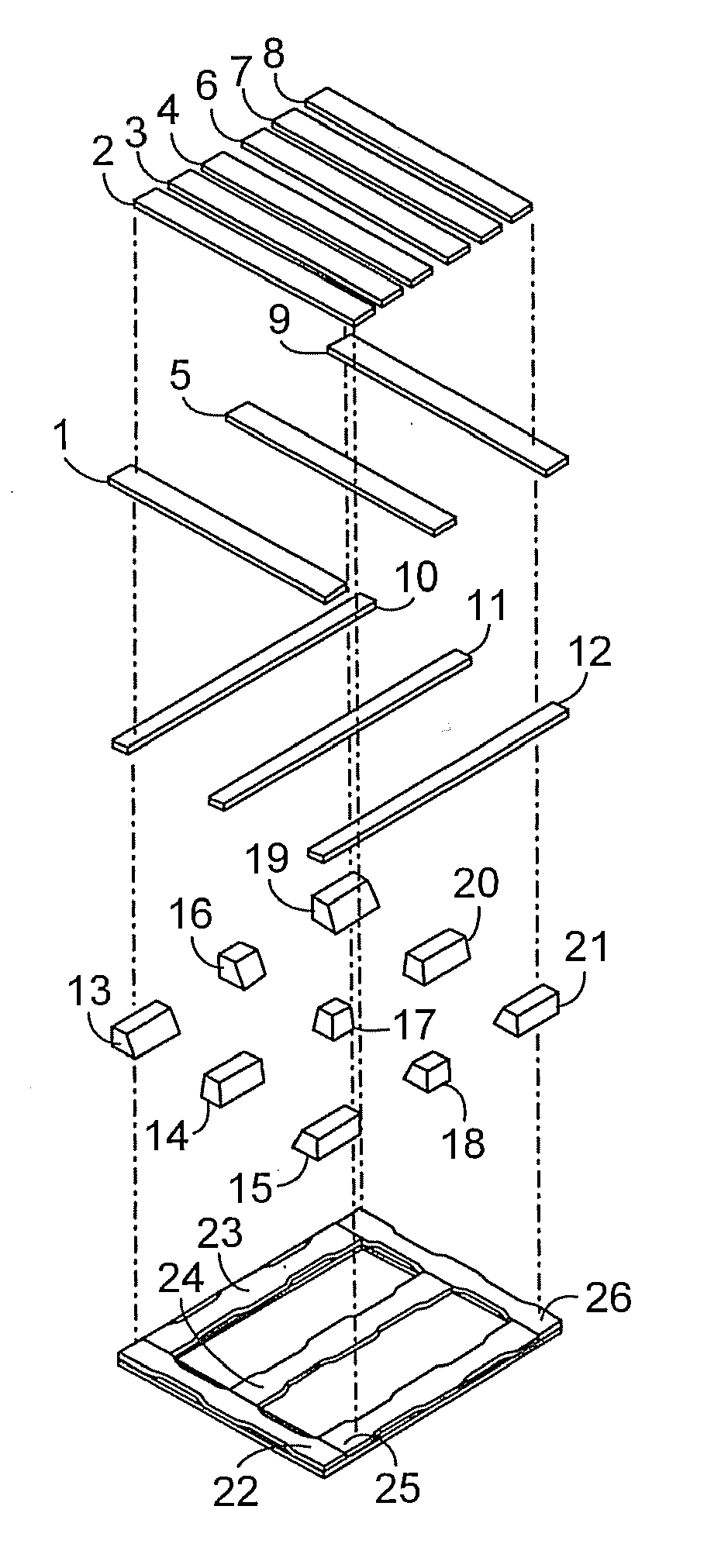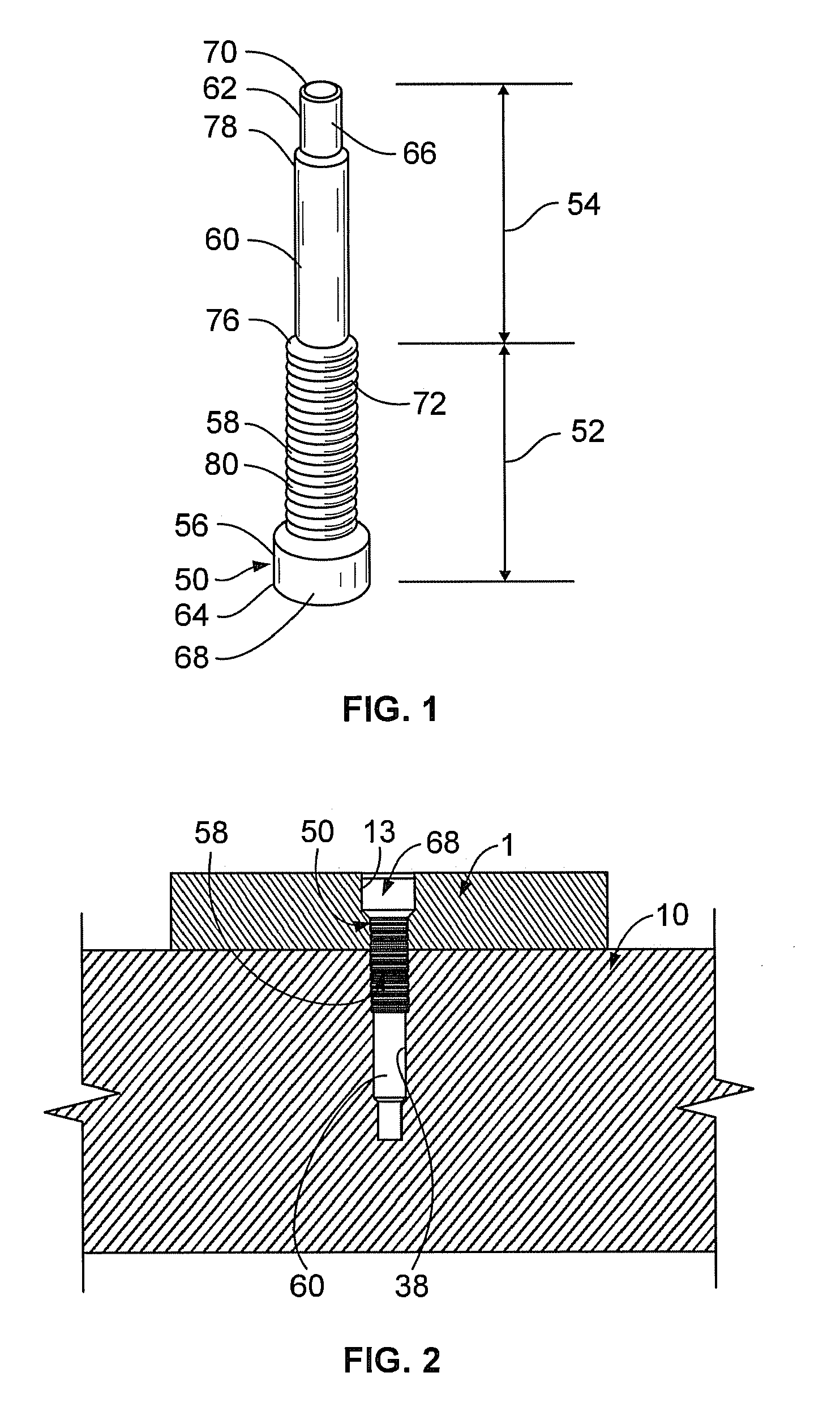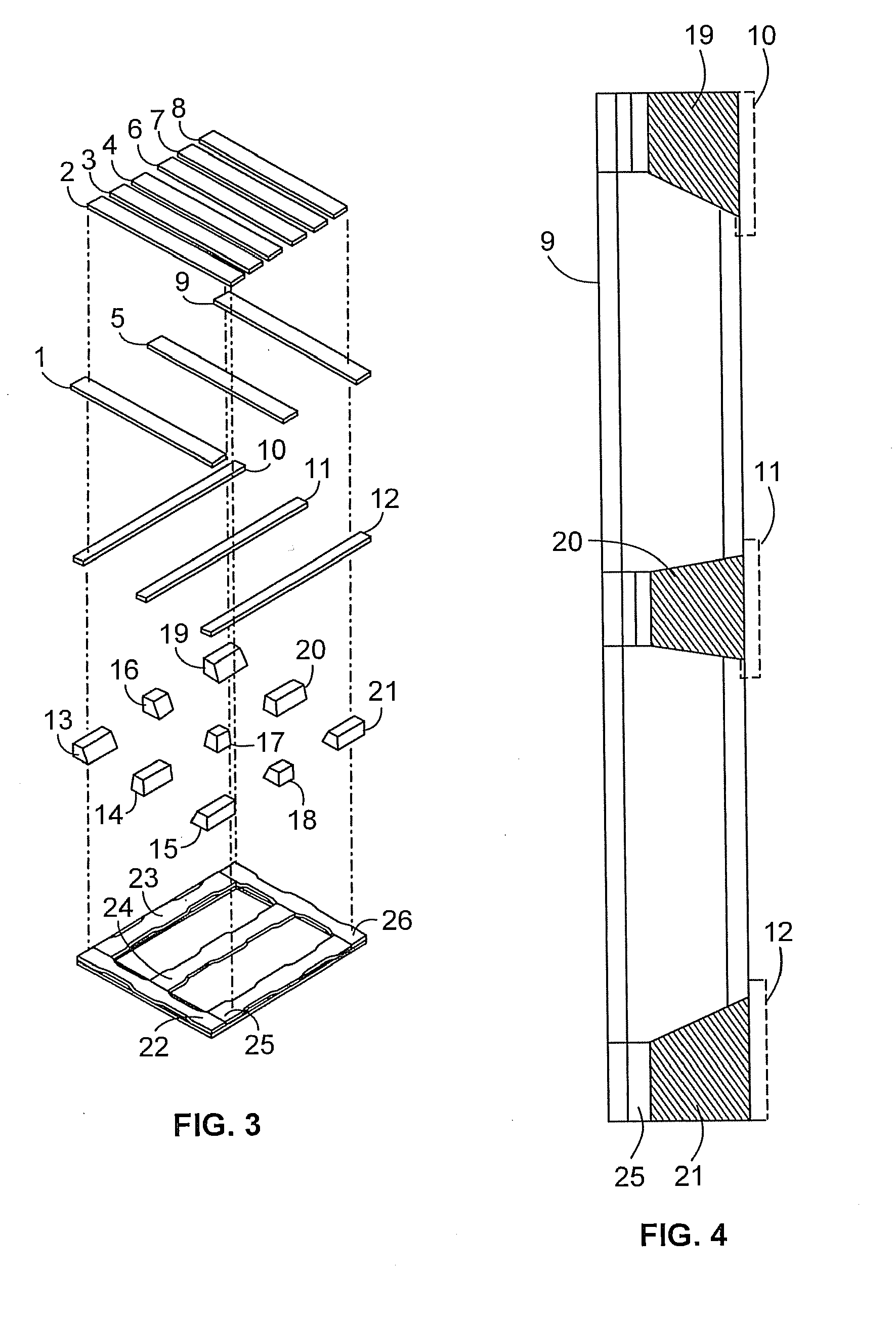Beveled block pallet
a beveled block and pallet technology, applied in the field of beveled block pallets, can solve the problems of affecting the lead board of the pallet with significant force, affecting the work efficiency of the pallet, and affecting the shear capacity of the pallet, so as to reduce the weight of the pallet and improve the shear capacity
- Summary
- Abstract
- Description
- Claims
- Application Information
AI Technical Summary
Benefits of technology
Problems solved by technology
Method used
Image
Examples
Embodiment Construction
[0032]Referring to FIG. 1, one embodiment of a wooden dowel 50 can be seen. The dowel 50 comprises a first portion 52 and a second portion 54. The dowel may have a plurality of dowel sections, a first section 56, middle sections 58, 60, and last section 62. While in a preferred embodiment, the dowel 50 has two middle sections 58, 60 other embodiments may have no middle section, one middle section, or three or more middle sections. The first and last sections 56, 62 may have side walls 64, 66 and end walls 68, 70, respectively. Each of the middle sections 58, 60 may have side walls 72, 74 and step walls 76, 78, respectively. In a preferred embodiment, each of the sections 56, 58, 60, 62 are contiguous to another section 56, 58, 60, 62. The sidewalls 64, 66, 72, 74 define a cross-sectional size for their respective sections 56, 58, 60, 62. In a preferred embodiment, the cross-sectional size of the sidewalls 64, 66, 72, 74 decreases as one progresses from the first section 56 to the la...
PUM
 Login to View More
Login to View More Abstract
Description
Claims
Application Information
 Login to View More
Login to View More - R&D
- Intellectual Property
- Life Sciences
- Materials
- Tech Scout
- Unparalleled Data Quality
- Higher Quality Content
- 60% Fewer Hallucinations
Browse by: Latest US Patents, China's latest patents, Technical Efficacy Thesaurus, Application Domain, Technology Topic, Popular Technical Reports.
© 2025 PatSnap. All rights reserved.Legal|Privacy policy|Modern Slavery Act Transparency Statement|Sitemap|About US| Contact US: help@patsnap.com



